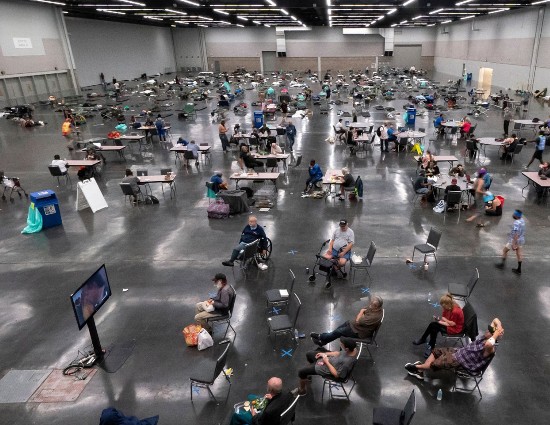
A couple of weeks before we moved to Oakville, Ontario, a town southwest of Toronto that borders Lake Ontario, we visited our new apartment only to be overwhelmed by the smell of wood smoke in the building’s halls. This wasn’t the pleasant odour of a wood fire. It smelled like other things had been burned up and were contributing to a rancid and acrid stink in the air.
The smoke hitting the shores of Lake Ontario and places far to the south was coming from forest fires hundreds of kilometres to the north and east. These fires were burning more than the trees. Remote farms and homes, debris on forest floors, farm equipment, trucks, cars and many unknown things were being burned and going up in smoke as well.
Fire season had erupted far earlier than in the past because of prolonged drought in many areas of Canada’s boreal forest region that spans much of the country. Meteorologists, climatologists, and foresters all had the same explanation – climate change. The new state of normal included the term fire weather.
Today as I look out over the lake, the smoke is gone. The sky and lake are blue. But over the last almost two weeks since we moved here, the smoke has come back several times. Forecasters expect it to be a chronic problem for the rest of this summer, and likely well into the future.

Following on the heels of the wood smoke came an early summer heatwave with temperatures and humidity well above seasonal averages. Again, the explanation given by meteorologists and climatologists was simple – climate change.
Climate Change Tipping Points
The new normal includes wildfire seasons that span from spring through to the fall, and heat domes that persist for days. Some scientists are referring to this as the first climate change tipping point, long predicted by those paying attention to rising carbon dioxide (CO2), methane (CH4) and other human-activity-generated greenhouse gas emissions.
Why now? There are lots of reasons but the one that climatologists are zeroing in on is diminishing polar land and sea ice. The polar ice caps in the Arctic and Antarctica are seeing record melts. In June, the Greenland Ice Sheet recorded one of the largest melts ever seen. And the month turned out to be the hottest ever measured, beating the previous record set in 2019 by 0.16 Celsius (0.29 Fahrenheit).
Every continent on the planet experienced new heat records. Texas and Florida were roasting, as was much of Mexico. A mountain heatwave in Iran saw temperatures at 1,500 metres (approximately 5,000 feet) hit daytime highs of 49 Celsius (120 Fahrenheit). In Puerto Rico, the heat index reached 51.9 Celsius (125 Fahrenheit).
Some of the record heat could be explained by the beginning of the next Pacific Ocean El Niño 2-to-7 year cycle that has boosted global average temperatures by as much as 0.2 Celsius (0.36 Fahrenheit).
The combination of El Niño, extended fire seasons, polar ice melt, and heat domes is expected in the next year to push global mean temperatures 1.5 Celsius (2.7 Fahrenheit) higher than pre-Industrial Revolution records.
The Human Cost of Climate Change
The cost of these recent extremes goes beyond the damage to forests, oceans, lakes and other ecosystems. The high temperatures are also taking a toll on human health. In the U.S. alone, a recently published policy report coming from the Center for American Progress estimates a rise in healthcare-related costs of $1 billion this year from rising atmospheric temperatures. The report estimates an increase of 235,000 in hospital emergency room visits and 56,000 additional admissions. It states,
“The growing threat of extreme heat requires all levels of government and the private sector to confront the fundamental crisis of climate change by taking action to reduce greenhouse gas emissions and to pursue policies that mitigate the effects of extreme heat and the emergencies it creates.”
It calls for immediate action to:
- reduce greenhouse gas emissions,
- strengthen responses at all levels to adopt a whole-of-government approach to climate change,
- provide better and timely data collection to track and predict the impacts on public health of extreme heat and other climate-change-related phenomena,
- raise public awareness of extreme heat and other climate change phenomena and provide action plans and protective measures in communities most at risk,
- strengthen health care infrastructure and resources for treatment to manage heat and other climate change-related illnesses.
The saying “ignorance is bliss” doesn’t apply when responding or not to climate change. A better phrase to describe what is the current state of response is “ignore at your peril.” That applies to all of us as the primary agents of climate change and stewards of the planet.








